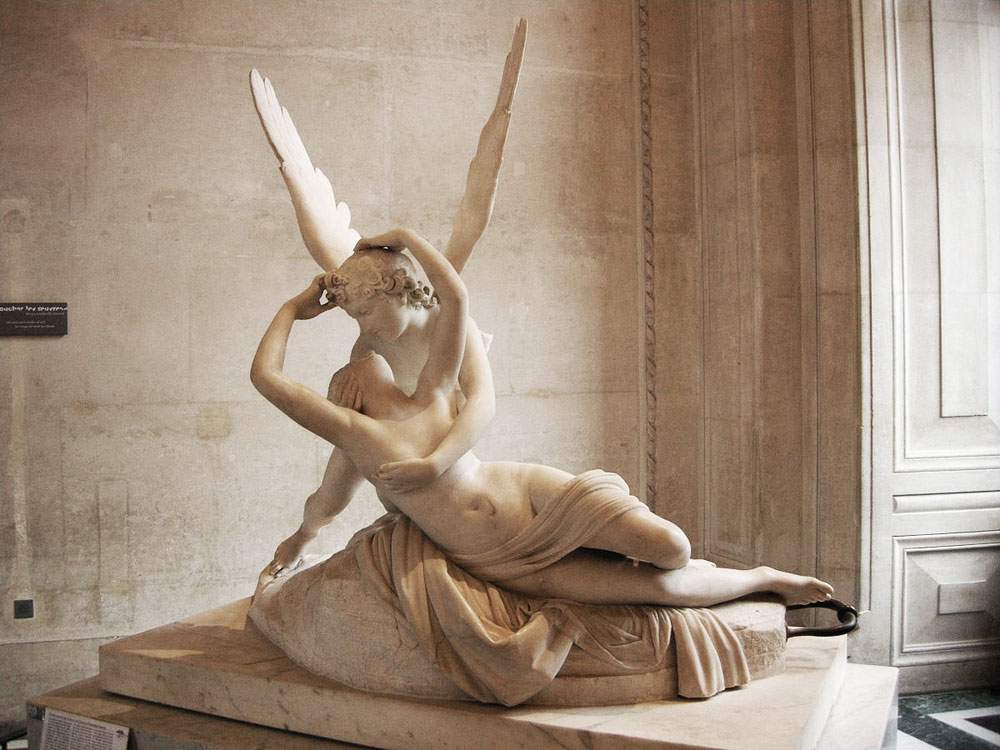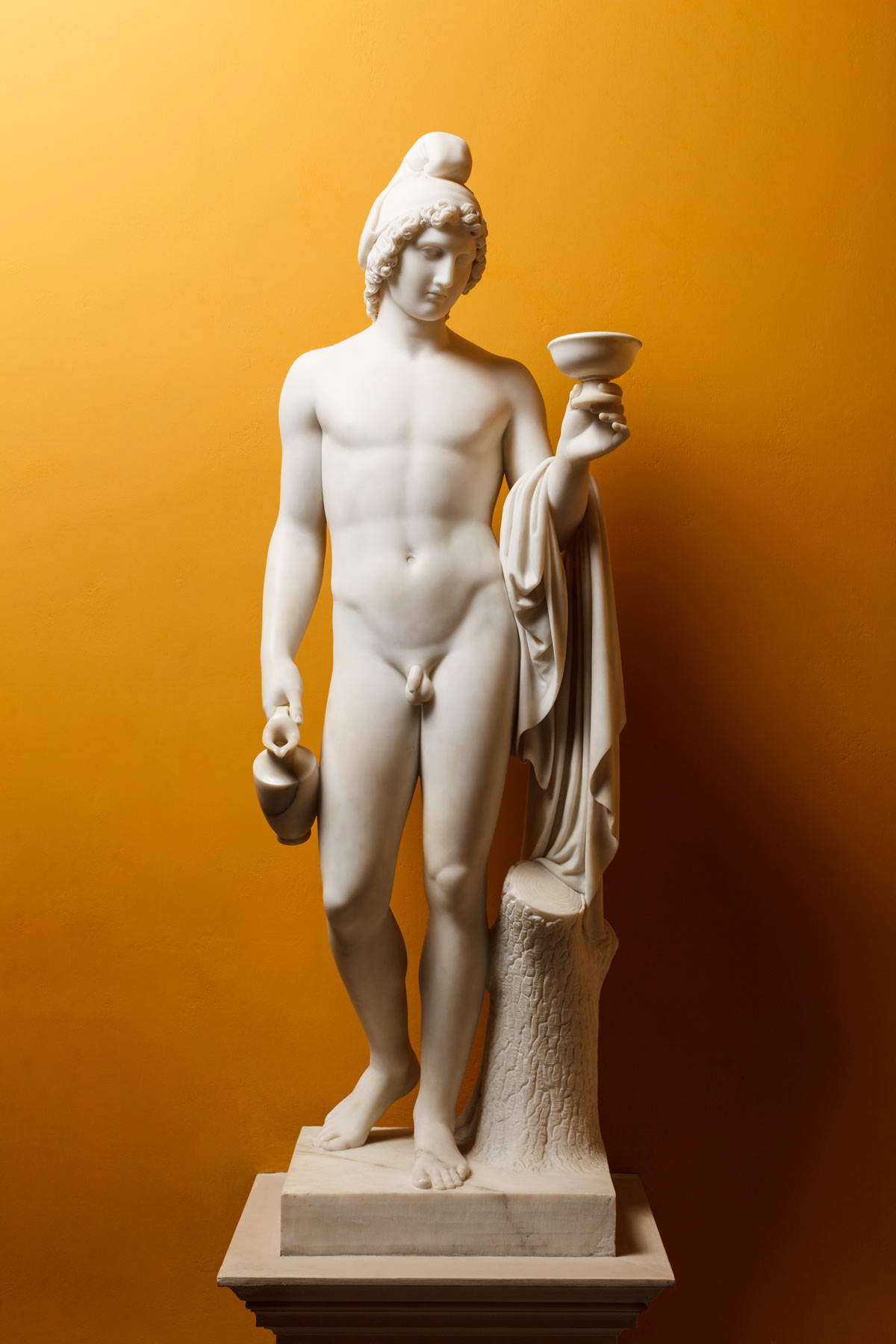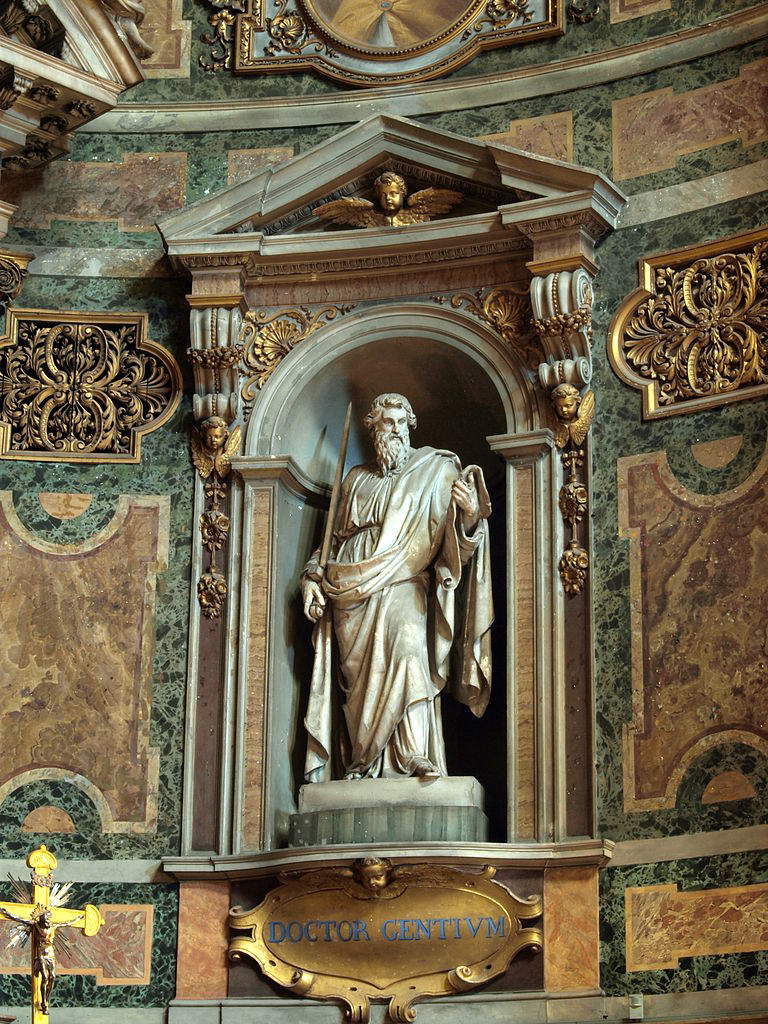The art of neoclassicism arose mainly as a reaction against the virtuosity and rhetoric of late Baroque taste but also against the frivolities of Rococo: the reaction was therefore not only aesthetic but also moral. The starting point of this type of art was the desire to seek a new classicism (hence the name) that could still recover ancient art, for a search for rigor and objectivity that was in line with Enlightenment philosophy and distanced itself from contemporary art. What differentiates neoclassicism from the classicisms that preceded it is above all the spirit that animated the neoclassicists’ researches: if in the past the recovery of classicism was also a recovery of values, in the late eighteenth century artists became aware that that ancient civilization they wanted to recover would never return, and as a result neoclassical art became tinged with the sense of nostalgia that pervades all works created in this era. Neoclassical art, however, also responded to a definite Enlightenment vision of art, according to which works of art were to make themselves the bearers of ethical intent.
Neoclassicism also differed from contemporary art forms because the pursuit of ideal beauty, which was to draw inspiration from both Roman and ancient Greek art, was to be stripped of any sort of drama, sentiment, and human passion: for this reason, neoclassical works always appear composed and calm even where a highly dramatic or painful scene is consummated. The neoclassical canon of ideal beauty was made explicit by what was arguably the greatest theoretician of neoclassical art, the German Johann Joachim Winckelmann, according to whom ideal beauty could be summed up in the formula noble simplicity and quiet grandeur(read more about the foundations of neoclassicism according to Winckelmann here): “nobility” referred to the elegant forms of classical art, “simplicity” in that they were to be far removed from bizarre and extravagant virtuosity, while “quiet grandeur” was that of the classical (and therefore neoclassical) man capable of controlling, in a rational way, his own drives. Ideal beauty was thus rational pursuit that should aim at simple forms but marked by a grace that resulted in an almost idealized balance and composure.
At the ethical level, neoclassicism re-proposed the typically classical concept of the union of beauty and virtue, in open polemic against the eccentricities of Baroque art, seen as excessively virtuosic and extravagant and therefore far removed from rationality, especially in the illusionistic achievements of the greatest Baroque painters. Neoclassicism was also against the licentiousness of Rococo art, whose frivolity and especially disengagement it criticized. Neoclassical art, however, was not everywhere uniform as it was an international language that found different declinations depending on the country in which the art was produced (thus different moral and social needs) and also on the personal inclination of the artist.





The greatest exponent of neoclassicism in Italy, in the field of sculpture, was undoubtedly Antonio Canova (Possagno, 1757 - Venice, 1822), the artist in whom the search for ideal beauty theorized by Johann Joachim Winckelmann found its greatest expression and was made explicit in an absolute balance between idealization and natural forms. However, despite the fact that the quest for ideal beauty had found in Canova one of its greatest interpreters, Canova’s art was not marked by a deep political commitment like that of many of his contemporaries (especially the French). Indeed, Canova himself believed that art should overcome the tendency to bend to contemporary politics and instead become the bearer of more universal values (such as the struggle of reason over force, represented by a youthful sculpture by the Venetian artist, Theseus on the Minotaur, 1781-1783, London, Victoria and Albert Museum). Thanks in part to his keeping himself above parties, Canova was able to secure commissions from even conflicting political circles.
Canova’s art drew on the classical repertoire, which the artist was able to revisit with his own sensibility in search of an abstraction that became especially evident in scenes that were meant to presuppose movement or excitement, such as the Hercules and Lica (1795-1815, Rome, Galleria Nazionale d’Arte Moderna) where the characters’ expressions remain unperturbed and it seems as if we are witnessing more a dance than a struggle, although the force with which Hercules hurls his opponent away from the strictest neoclassicism. Canova also achieved the ideal purity that he wished to convey to his subjects with a particular workmanship of marble that imparted a smoothness that has remained unsurpassed, thanks to which the artist could create works marked by a high degree of refinement and great softness.
The sensory nature, however, is not entirely absent from Canova’s art: it can be discerned especially in his works with female subjects, to which Canova infuses a gracefulness, especially in the movements, and a pure beauty not devoid of a certain degree of sensuality that is especially evident in the poses, poses in which, however, there is no lack of that search for harmony and balance typical of neoclassicism. This strand of Canova’s art is most evident in one of the greatest masterpieces, namely, Cupid and Psyche lying (1788-1793, Paris, Louvre), a work in which Canova suggests the sensuality of intercourse through the embrace of the two protagonists, which becomes a symbol of their union, though without forgetting a neoclassical search for balance as the movement of the two lovers constructed according to a precise pattern of diagonal lines.
To find a more abstract and rigidly formal interpreter of neoclassicism one must look at the works of Bertel Thorvaldsen (Copenhagen, 1770 - 1844), a Danish artist long active in Italy and considered at the time to be the only sculptor in the world who could compete with Canova. Thorvaldsen’s recovery of classical art was in fact much more radical: the forms of his subjects became purer (one need only compare Thorvaldsen’s female nudes with those of Canova), and the sentiments altogether dormant. Contrary to what was happening in Canova’s art, movement, which in Canova expressed a desire to give his idealized beauties a contact with nature, the study of which had not been set aside by the Venetian sculptor, is completely missing in Thorvaldsen. Thorvaldsen’s sculpture, which took its inspiration directly from the canons ofancient Greek art, was the one that perhaps more than any other interpreted the desire for the formal rigor and abstraction advocated by the theorists of neoclassicism(Jason with the Golden Fleece, 1803, Copenhagen, Thorvaldsens Museum): nevertheless it appears far colder than Canova’s.




Canova had a large band of followers, but the two sculptors who best interpreted neoclassicism after him, though not reaching its technical and formal level, were Carlo Finelli (Carrara, 1782 - Rome, 1853) and Adamo Tadolini (Bologna, 1788 - Rome, 1868). Adamo Tadolini proved to be a faithful continuer of the Canovian style, which found its greatest results in celebratory or otherwise wide-ranging monuments. Carlo Finelli, who in the early nineteenth century became one of the most important and sought-after sculptors in Rome, proposed a very elegant and refined art that nevertheless succeeded in achieving greater abstraction than Canova’s: indeed, in many works he tempered the sensuality and diminished the dynamic charge(The Dancing Hours, 1824, St. Petersburg, Hermitage), though without reaching the rigid formalisms of Thorvaldsen.
Neoclassical culture also spread to painting, where the political intentions of neoclassicism became much more evident than in sculpture. Lacking direct references to ancient art, however, neoclassical painters could only refer to the great geniuses of the mature Renaissance, such as Raphael or Michelangelo, or to the classicists of the seventeenth century. Major exponents of neoclassical painting were Andrea Appiani (Milan, 1754 - 1817) and Vincenzo Camuccini (Rome, 1771 - 1844).
Andrea Appiani was one of Napoleon Bonaparte’s favorite painters and had notable and numerous official appointments. Trained by studying Leonardesque painters and the art of Correggio, Appiani engaged mainly in the celebration of theEmperor Napoleon, whom he depicted in portraits with a highly idealized flavor in which he extolled his virtues, even to apotheosis that recalled seventeenth-century classicist painting, but also in portraits, also idealized, in which Napoleon’s strength shone through above all from the intense gaze that Appiani gave him. Capable of compositions of great solemnity, however, Andrea Appiani was able to adopt a more delicate register in paintings such as Parnassus (1811, Milan, Villa Belgioioso Bonaparte) rich in references to Raphaelesque culture.
Vincenzo Camuccini’s commitment was different, as he was not in the least affected by the cult of Napoleon and preferred instead to paint scenes of historical subjects, taken mostly from classical antiquity(Death of Julius Caesar, 1798, Naples, Museo Nazionale di Capodimonte): the scenes, concise but balanced and with sentiments always expressed in a sober and composed manner as the theorists of neoclassicism wanted, became the bearers of high moral values of universal significance, making his civic commitment tangible. For the Roman painter, art had to have a precise educational intent: that is why the taste for anecdote is completely lacking in his works. Instead, Camuccini replaces this with a desire for a narrative that on the one hand tells the event without forcing and as objectively as possible, and on the other manages to communicate to the viewer the moral virtues (freedom, equity, justice, honesty) expressed by the event itself.
 |
| Neoclassicism: origins, development, style, great artists |
Warning: the translation into English of the original Italian article was created using automatic tools. We undertake to review all articles, but we do not guarantee the total absence of inaccuracies in the translation due to the program. You can find the original by clicking on the ITA button. If you find any mistake,please contact us.